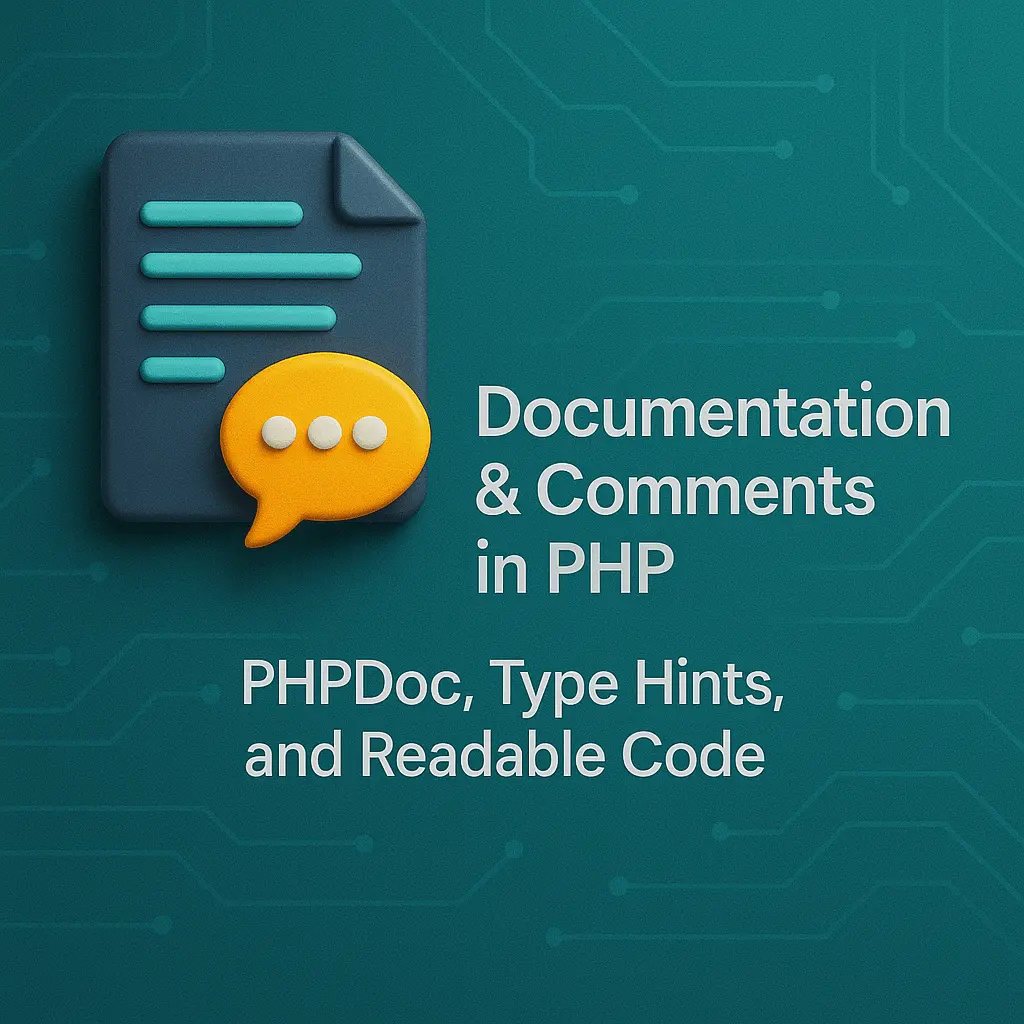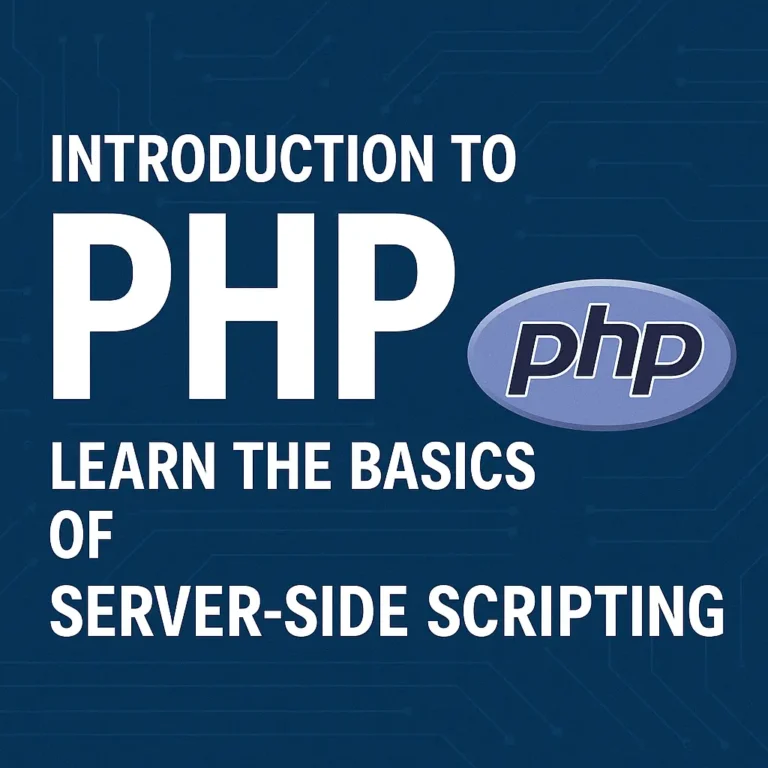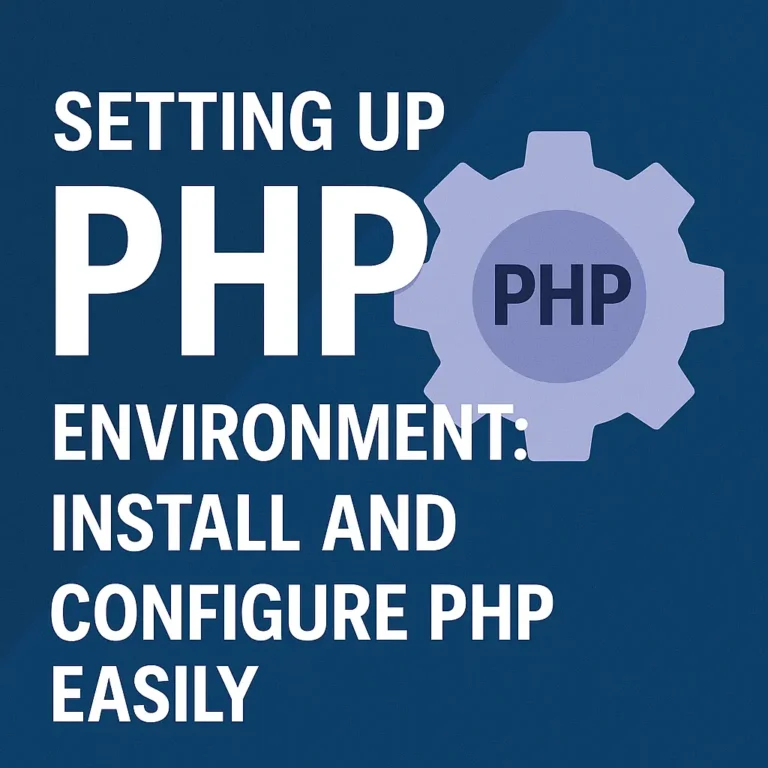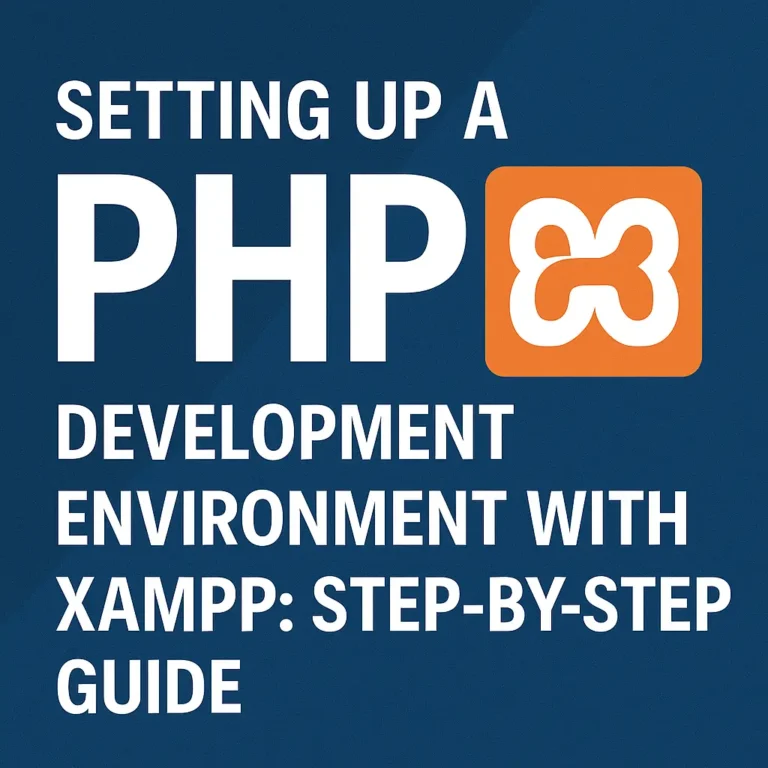In this article, we’ll explore the importance of writing documentation and using comments effectively in PHP code, along with best practices and examples.
Writing Documentation
1. Purpose and Overview:
Begin by providing an overview of the PHP file or function, explaining its purpose, usage, and expected behavior. This helps developers understand the context and importance of the code they’re working with.
/**
* Function to calculate the total price of items in a shopping cart.
*
* This function takes an array of item prices and calculates the total price.
*
* @param array $prices An array of item prices.
* @return float The total price of the items.
*/
function calculateTotal(array $prices): float {
// Function implementation
}
2. Parameters and Return Values:
Document each parameter accepted by functions and methods, along with their data types and any constraints. Similarly, describe the return values and their significance.
/**
* Function to calculate the total price of items in a shopping cart.
*
* @param array $prices An array of item prices.
* @return float The total price of the items.
*/
function calculateTotal(array $prices): float {
// Function implementation
}
3. Usage Examples:
Include usage examples to demonstrate how to use functions or classes effectively. This helps developers understand the expected input and output of the code.
/**
* Function to calculate the total price of items in a shopping cart.
*
* @param array $prices An array of item prices.
* @return float The total price of the items.
*/
function calculateTotal(array $prices): float {
// Function implementation
}
// Example usage
$prices = [10, 20, 30, 40];
$total = calculateTotal($prices);
echo "Total Price: $total";
Using Comments Effectively
1. Code Explanation:
Comments should explain the purpose and functionality of complex or non-intuitive code segments. This enhances code readability and helps developers understand the logic behind the implementation.
// Calculate total price
$total = 0;
foreach ($prices as $price) {
// Add each item price to the total
$total += $price;
}
2. TODOs and FIXMEs:
Use comments to mark areas of code that require further attention or improvement. This helps prioritize tasks and ensures that potential issues are addressed promptly.
// TODO: Implement error handling for invalid input
// FIXME: Optimize this loop for better performance
3. Code Annotations:
Annotations within comments can provide additional information for IDEs and static analysis tools, improving code navigation and understanding.
/**
* @var string $username The username of the authenticated user.
* @var int $userId The ID of the authenticated user.
*/
4. Version History:
Include version history comments to track changes and updates to functions, classes, or files over time. This facilitates maintenance and helps developers understand the evolution of the codebase.
/**
* Version 1.1.0 - Added support for additional parameters.
*/
Conclusion
Documentation and comments play a crucial role in the development and maintenance of PHP projects, providing clarity, context, and guidance for developers. By following best practices for writing documentation and using comments effectively, you can enhance the readability, maintainability, and collaborative nature of your PHP codebase. Remember, clear and comprehensive documentation is not just a nicety but a necessity for successful PHP development projects.






